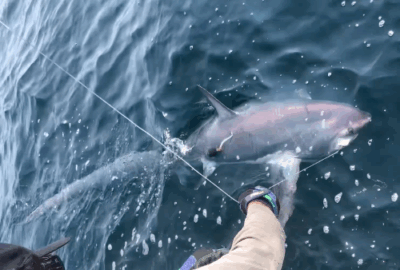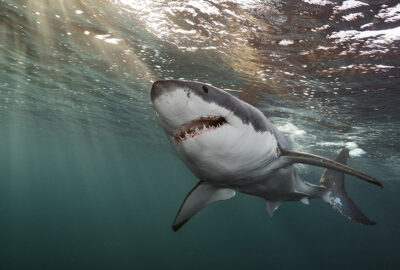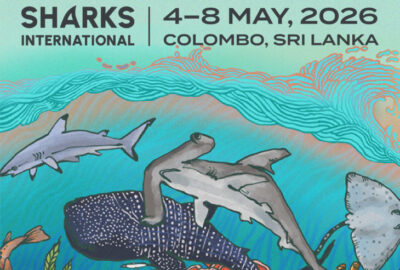Insights into the Relative Abundance, Life History, and Ecology of Oceanic Sharks in the Eastern Bahamas
By Brendan S. Talwar, Edward J. Brooks, Debra L. Abercrombie, Brenda Anderson, Mark E. Bond, Annabelle M. L. Brooks, Demian D. Chapman, Gina M. Clementi, Candace Y. A. Fields, Jim Gelsleichter, R. Dean Grubbs, Lucy A. Howey, Lance K. B. Jordan, Jeremy J. Kiszka, Ryan J. Knotek, Yannis P. Papastamatiou, Cheston T. Peterson, Eric V. C. Schneider, Oliver N. Shipley, Sean Williams, Maggie M. Winchester, and Michael R. Heithaus
Originally published in Sustainability in December 2023

Abstract
Fisheries-independent data on the diversity, relative abundance, and demographic structure of poorly studied, threatened oceanic sharks are absent from much of the western North Atlantic Ocean, where multiple oceanic shark species have experienced significant population declines. Resource-limited management approaches require the identification of critical habitats or aggregation sites worthy of protection and enforcement. Data were collected on oceanic sharks using pelagic longline surveys, targeted baiting, and opportunistic encounters in oligotrophic open-ocean habitats of north-eastern Exuma Sound (NES), The Bahamas. The oceanic epipelagic shark community was also characterized using targeted baiting off Columbus Point, Cat Island (CI), a seamount north of San Salvador (SSSM), and the northwestern tip of Mayaguana. Pelagic longline surveys suggested that the relative abundance of sharks at NES was low (shark catch-per-unit-effort: 0.0007 sharks hook−1 h−1; 2.3 sharks per 1000 hooks). Silky sharks Carcharhinus falciformis, particularly juveniles (134 ± 39 cm stretched total length; mean ± SD STL), were the most common. Targeted baiting suggested oceanic whitetip sharks C. longimanus were abundant at CI, where large adults (245 ± 23 cm STL), most of which were females (83.8%, n = 98 of 117) that were gravid (65.7%; n = 46 of 70 assessed for pregnancy), dominated the aggregation. Many (20.5–26.5%, n = 24–31 of 117 depending on assumptions regarding tag loss) were recaptured or resighted at CI for up to five years. Silky sharks dominated catches at SSSM. Oceanic sharks, particularly adults, were sometimes caught or observed alongside short-finned pilot whales Globicephala macrorhynchus or tunas. Although The Bahamas offers threatened oceanic sharks refuge from fishing across its entire jurisdiction, these data suggest that some fixed features, including sites such as CI and potentially SSSM, are important aggregation sites with high regional conservation value and should be prioritized by fisheries managers and enforcement officials.
Full Text





